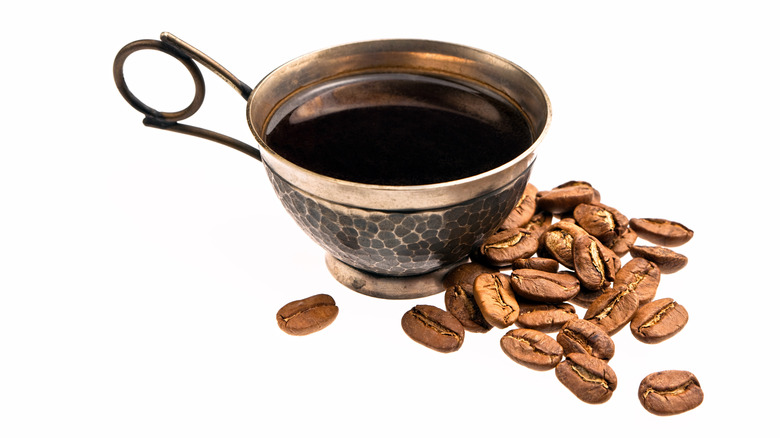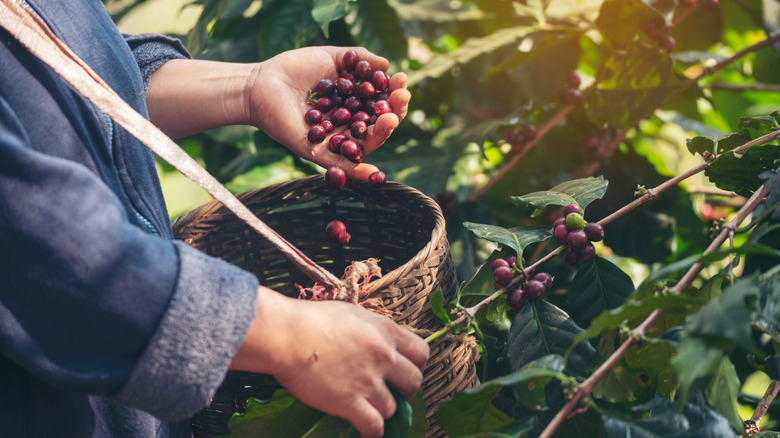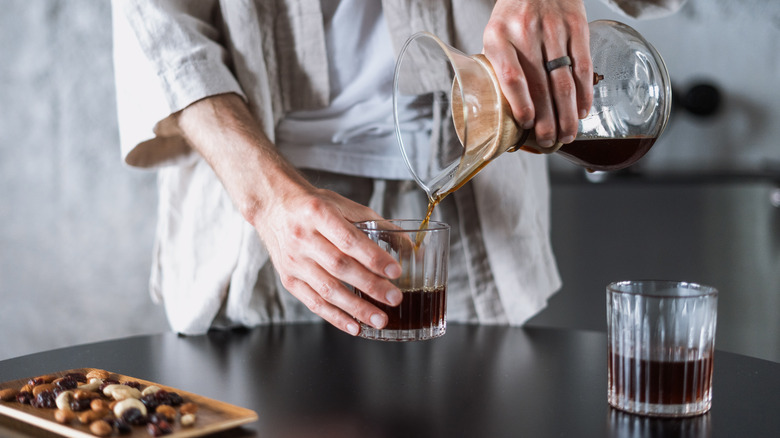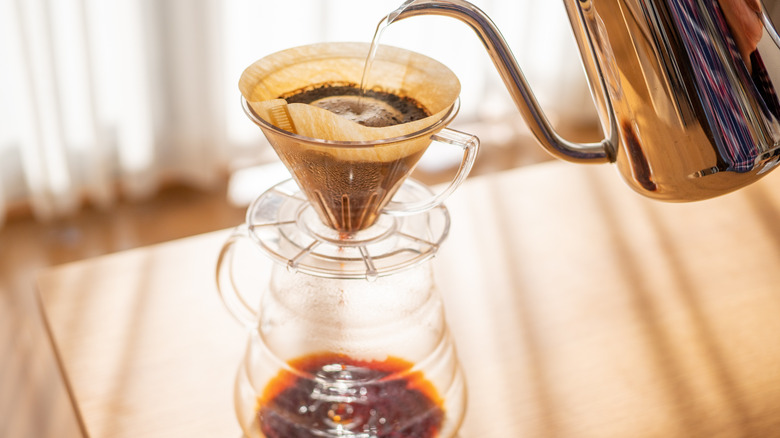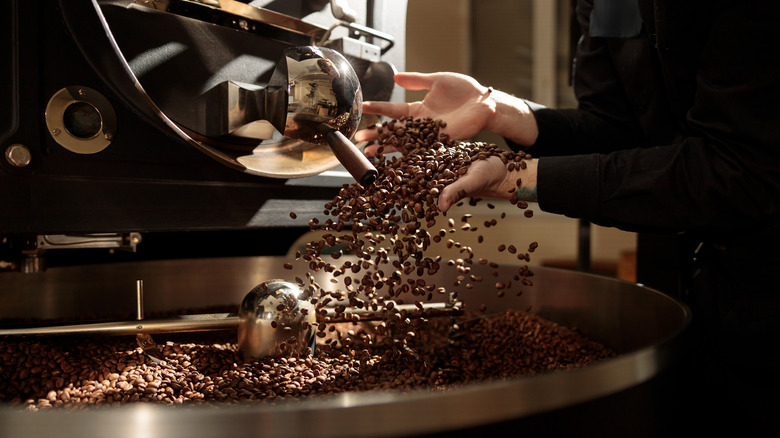What Is The Rare Maragogipe Coffee And What Does It Taste Like?
Coffee — this ubiquitous beverage can range from simply an energizing cup in the morning to a drink with the greatest complexity. As a beverage with its own terroir, specific varietals matched with a certain environment produce cups that stand out from the rest. Exactly such is the case for the rare Maragogipe coffee.
Also known as an "Elephant Bean," its coffee cherries and leaves are of abnormally large size. However, such a characteristic is not what makes the coffee so lucrative. Instead, it's Maragogipe's incredible taste, which has an appealing natural sweetness and floral complexity. Difficult to grow due to a low yield and hard to process due to the coffee's size, such an amalgamation of factors makes it one of the world's rarest varietals. Regardless, it is worth seeking out — with a sip, it is understandable why a brewed cup of this bean is something special.
Origins of Maragogipe coffee
This large-bean coffee variety hails from Brazil, where it was first discovered in 1870. Its name derives from a Brazilian city in close proximity to its source. Many believe the bean originated as a genetic hybrid between the Typica and Bourbon varieties; however, such a proposition is uncertain. It is clear Maragogipe is a spontaneous mutation, which bears distinct characteristics from other varieties.
From Brazil, Maragogipe spread to Columbia and onward to Central American nations, including El Salvador, Nicaragua, and Guatemala. Today, it also has a presence in Mexico and Hawaii. This coffee varietal grows best at high elevations and is highly susceptible to diseases like coffee leaf rust and coffee berry disease. This has led many farms, especially Brazilian ones that often favor high-volume production, to phase out the bean. However, accelerated by a rapidly expanding market for specialty coffee, growers in Mexico, Guatemala, and Nicaragua often showcase the best of the bean.
Flavor of Maragogipe coffee
Maragogipe has an appealing combination of factors. It has a full body, meaning each cup is accompanied by a richer mouthfeel. Despite this, the flavor is elegant and refined without any robust undertones. Additionally, the acidity is balanced — no excess of tangy flavors that overpower other components. Most Maragogipe coffees go through washed processing, meaning they will have cleaner palates with fewer sugars present from fermentation.
As with other coffee varietals, the location of growth combined with the harvest season impacts the tasting notes. When grown in Nicaragua, the coffee usually has a natural sweetness resembling toffee, accompanied by floral notes like those found in wildflower honey.
A lot grown in Hawaii boasts more fruit-like peach flavors, underpinned with herbal touches akin to hops. And Guatemalan beans often have more nut-like undertones, punctuated by the characteristic floral notes at the finish. Such a range of flavor variations makes the bean all the more enthralling for coffee enthusiasts.
How to brew Maragogipe coffee
Like other nuanced coffees, it's necessary to take extra care to showcase the full spectrum of Maragogipe's aroma. First, it's not recommended to take this varietal with milk since the lactose in dairy will overpower the coffee's natural sweetness. Additionally, the bean doesn't do as well with espresso since the more concentrated extraction diminishes the floral flavors. Instead, opt for brewing methods like pour-over or French Press.
Plus, such gadgets are relatively affordable, making the preparation of coffee at home more accessible. Since recipes alter based on the roast, ask the source of your coffee for the best recipe. Alternatively, utilize a ratio popularized by established baristas, with a ratio of one part coffee to sixteen parts water. Make sure to bloom, and pour carefully to highlight the best of the bean. With so many variations between each lot, fine-tuning each brew is the fun part of the process. Careful control over each factor will yield the most aromatic cup.
Where to buy maragogipe coffee
The best place to find Maragogipe coffee is from a reputable roaster. If not roasted to precision, the delicate details of the brew will not be discernible. Additionally, it's important the coffee is roasted and bagged relatively soon after harvest — flavors start to diminish if it's left in storage for more than six months. The best time to search at a local roaster is from fall through spring when Maragogipe coffee is in season. Alternatively, order online from a purveyor with a large collection of esteemed coffee beans on offer, such as Thornton Family Coffee Roasters or Mitalena Coffee.
Of course, for the tastiest brew, there's nothing like a sample of Maragogipe coffee from the source. Many farm tours are available in Nicaragua, or head to Cafeología in Chiapas, Mexico, for a leading regional roaster. In these premises, a sip of this tasty coffee is guaranteed to be one of the world's best.
